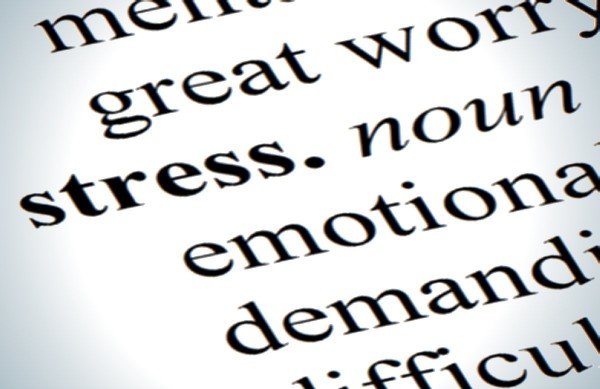How to tackle stress in the workplace effectively
 By Sue Paterson
By Sue Paterson
Before discussing the issue of stress in the workplace it’s essential to be clear about what is meant by the word ‘stress’. The term is used in many contexts and its meaning can be interpreted in different ways.
As we describe in our book ‘The Fear Free Organization: vital insights from neuroscience to transform your business culture’, in the context of wellbeing and health, stress is what happens to a body when something disturbs its equilibrium. The source of the stress is called a ‘stressor’, and is usually interpreted by the brain as a threat or danger that needs to be dealt with as a matter of priority. It can be something in the external world that causes worry and distress, or it can be something that is generated internally through memories and emotions. Stressors can last for a long time or they may only persist for a few seconds.
Examples of stressors at work are a door suddenly and unexpectedly banging shut, too much to do in too short a time, bullying behaviour by a colleague or boss, or reminders of past traumas. Other examples include the risk of losing a valuable customer, or the opportunity to speak to the board about a topic of great importance.
The body reacts to the stressor by gearing up to respond to the perceived threat or danger. Chemicals flood throughout the body so that it can take suitable action: fight, flight or freeze. Responses are physical as well as emotional. They include having tense muscles, a higher heart rate and sweating, as well as feeling on edge and being on the alert. The brain focuses all its attention in dealing with the effects of the stressor.
Stress can be both positive and negative. Increased stress can result in increased motivation, excitement or productivity, but only up to a point. At just the right amount of stress for any particular task, performance is optimal; concentration is maximised on the task to make sure mistakes are not made or unsafe acts carried out. Performance levels can be raised if the challenge for the task is suitably set. But beyond this optimum point, stress starts to have a negative effect. The body is no longer coping well and fatigue sets in. The more stress that is experienced, the worse it gets, and eventually the body will end up exhausted. There is a serious risk of ill health and eventually breakdown. Performance is poor and the business suffers.
Each person has a unique way of responding to a stressor, depending on his or her emotions, memories and personal history, and every individual has their own limits for coping with stressors. Different people will respond to the same stressor in different ways. It is not the stressor that makes people stressed, but rather how they respond to it, and that is a very personal thing.
Some people for example, will find a fast-paced dynamic and interactive team highly stressful, whilst others will thrive in it. Some will not do well working alone behind a screen all day, whilst others will only deliver when undisturbed. Some people will find the pressure of a tight deadline exhilarating, encouraging them to do exceptionally well, whilst others will find the pressure too much and will perform badly or not at all.
Dealing with stress at work is important to make sure that employees’ wellbeing is safeguarded, and that business performance is optimised. The positive stress that leads to improved performance should be encouraged, but the negative stress that results in distress and exhaustions needs to be tackled urgently. It’s important for leaders to recognise that different people have different limits, and what may be positive stress for one person devastates another.
The fundamental way to deal with an individual’s negative stress is to identify what the stressor is for that person and to remove it. There are three main stages for a leader to help the individual do this
- Recognise that the individual is feeling stressed and needs help. This is often the hardest step; the person may be trying hard to cope with what is going on and admitting that he or she is not handling it well may be viewed as an admission of failure.
- Have an open and honest conversation about what the potential stressors could be, without making any judgements or final conclusions. Note that the stressors may not be related to the workplace at all, but are impacting the individual so much that their work is affected. These types of stressors include for example marriage problems, concerns about children or ageing parents, and money or health issues.
- Help the individual make a plan to remove the stressor as much as possible. If the problem is at work, get involved to deal with it. If the problem is outside the workplace, help the individual to get the support they need. If it is a major problem this may result in time off work to resolve the issues, but it is time well invested if the individual returns to the job well again and able to work productively.
 Dr. Sue Paterson is the co-author of The Fear-Free Organization: Vital Insights from Neuroscience to Transform your Business Culture, a pioneering new book that she wrote with Joan Kingsley and Dr Paul Brown, that draws attention to the need for senior staff to appreciate how fear may be ruling their businesses and how this is affecting their teams, prohibiting the development of new ideas, creativity and unlimited potential. Available from £29.99 from all good booksellers and the Kogan Page website.
Dr. Sue Paterson is the co-author of The Fear-Free Organization: Vital Insights from Neuroscience to Transform your Business Culture, a pioneering new book that she wrote with Joan Kingsley and Dr Paul Brown, that draws attention to the need for senior staff to appreciate how fear may be ruling their businesses and how this is affecting their teams, prohibiting the development of new ideas, creativity and unlimited potential. Available from £29.99 from all good booksellers and the Kogan Page website.
How to tackle stress in the workplace effectively
Sue Paterson explains how stress affects people in the workplace, include triggers and how to tackle the problem effectively. Dealing with stress at work is important to make sure that employees’ wellbeing is safeguarded, and that business performance is optimised.
Safety & Health Practitioner
SHP - Health and Safety News, Legislation, PPE, CPD and Resources Related Topics
Metalworking fluids: Most businesses inspected ‘not doing enough’ to protect workers
SHP’s most-read articles of 2023
Legionella risk in RAAC affected buildings



A good article on workplace stress Sue, though I was disappointed by the employee focussed response and the suggestion that the issue is primarily with the individual rather than the organisation. This approach may well be appropriate if there are only a small minority of employees who are experiencing stress at their workplace, but individual managers speaking with each of their stressed employees and trying to resolve issues one by one in an organisation that is suffering from wholesale workplace stress problems would be futile, and I would suggest, incredibly stressful for the managers and frustrating for the employees if… Read more »